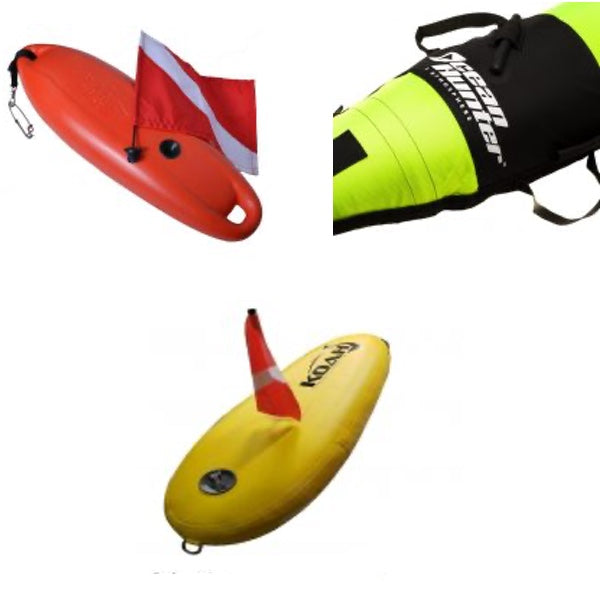
Choosing The Right Spearfishing Float For You - Advanced
We have already written an article going over the different methods of construction of spearfishing floats. This article is more designed to elaborate on the technical benefits and demerits of each and how to choose the right size float for certain species. Unfortunately there is no ‘perfect float’ out there that will land everything from small fish to world record tunas, but this article will help you better understand how to build out your perfect spearfishing rig for several different targeted species and diving styles.
Considerations in Picking The Right Float
There are several considerations on how to pick the right float for your spearfishing trip. Most of them pertain to buoyancy. Other considerations include the amount of drag, and the subsequent back pressure that drag creates on the fish, which can pull out of soft-fleshed fish, but help you keep tough fish from rocking up on the reef.
Negative Buoyancy Considerations
Fish are negatively buoyant, especially if their swim bladder has been punctured. At the very minimum you will need a float buoyant enough to float your equipment and the fish once it has perished. How do we determine how much buoyancy we need to have for any given fish? Typically fish have a negative buoyancy of 10-20% of their total body weight. That means a 220 lbs (100 Kg) tuna may have a negative buoyancy of 44 lbs (20 Kg). So at the very minimum we need to displace at least that much saltwater to have the spearfishing float make your fish float.
The Math on Buoyancy for Spearfishing Floats
But why consider the amount of water displaced to calculate buoyancy? The Encyclopedia Britanica defines buoyancy as “any body completely or partially submerged in a fluid (gas or liquid) at rest is acted upon by an upward, or buoyant, force, the magnitude of which is equal to the weight of the fluid displaced by the body”. In simple terms, that means a 12 liter float displaces 12 liters of water. It has the buoyant force of that amount of water. Because the world of spearfishing is divided between Standard (American) measurements and Metric (the rest of the world) I will describe both.
Metric
Salt water is denser than fresh water. That means one liter of salt water weighs more than one liter of fresh water. One liter of salt water weighs approximately 1.025 Kg. So, in salt water, a 12 liter foam filled hard float will have the buoyant force of 12.3 Kg. That means you may need more than one float to ensure large fish will be brought up to the surface. Most 3 ATM floats claim to have displacement of 25.5 Kg up to a depth of 20 meters, which makes these floats the perfect second float attached by a bungee to a hard float for those large pelagic species.
Standard
Standard is a little more complicated to measure because of conversions. 1 Kg is 2.2 lbs, so a liter of salt water at 1.025 Kg is 2.255 lbs. That means a 12 liter foam filled hard float displaces 27.06 lbs. That means you may need more than one float to ensure large fish will be brought up to the surface.
Amount of Drag and Back Pressure
Beyond buoyancy, divers also have to consider the amount of force these fish create when they run. All spearfishing equipment has points more likely to fail (usually knots or connections). In order to land large pelagic species, we have to do our best to prevent gear failures by distributing the amount of force as evenly as possible across all of our equipment. Fish will try (and often succeed at) submerging spearfishing floats. That is a good thing. If spearfishermen just had massive floats that never went under, fish would sound or run and effectively hit a wall and tear the spear shaft or slip tip out of their body when they hit the end of your floatline.We use bungees of various lengths to allow gradual pressure to submerge a float rather than the fish hitting the float suddenly. With some species, it is best just to use a long bungee as a floatline. Examples of this are tuna and marlin. For other species, a bungee incorporated into the floatline works just as well, like wahoo and amberjack.
All of these considerations can be difficult to manage on blue water trips. Some trial and error is bound to happen. The best advice is to talk to people that have targeted the species you're going for before, or at least people who have done similar trips to help cut down on the learning curve.
